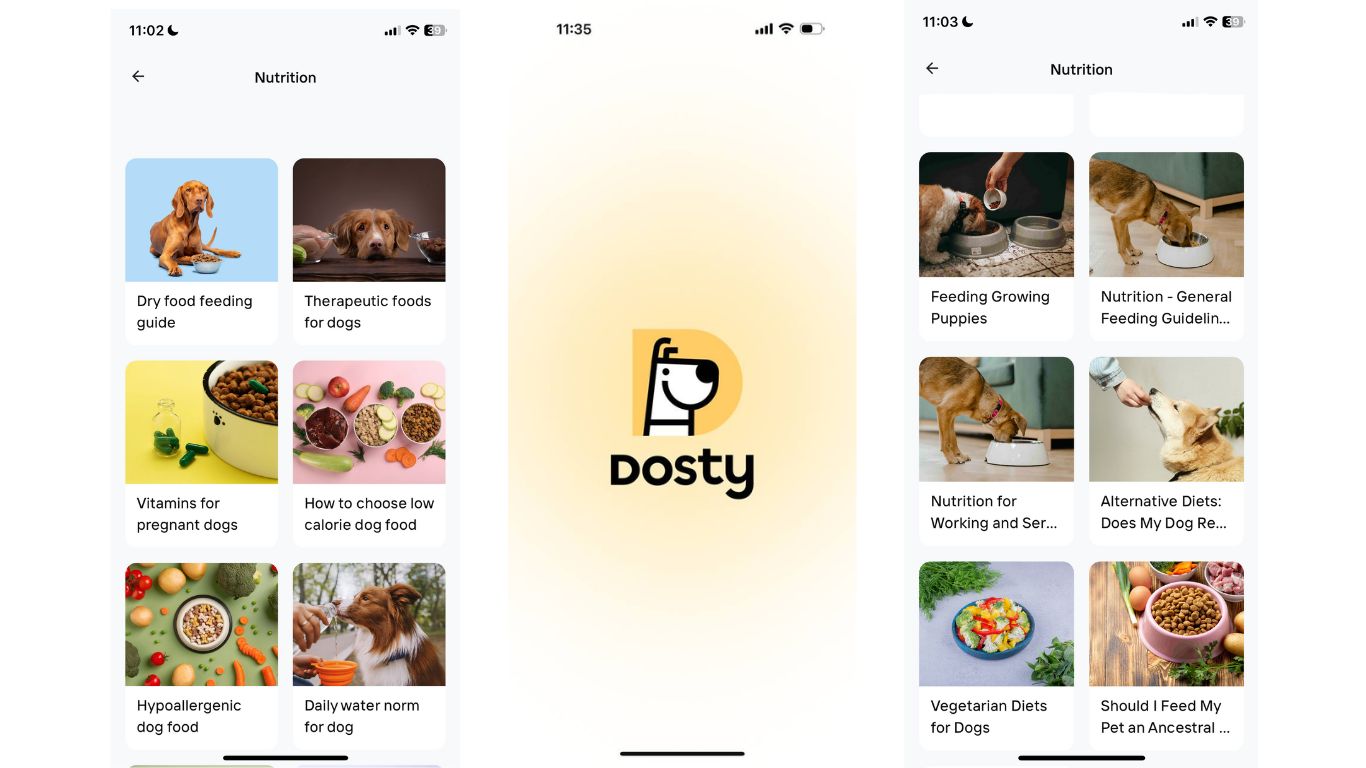On this page
Best Dog Food for a Healthy Diet
The best dog food is important to your pet health, energy and longevity. A good diet is important for their immune system as well as their coat, digestion, and overall well-being. This guide covers each, from high-quality dog food to the essential nutrients, top brands, and recommendations based on your dog’s size, breed and lifestyle.
Studies by the American Veterinary Medical Association (AVMA) suggest nutrition is a major factor in disease prevention and long-term health even in dogs.
👉 Choose wisely for your dog’s health! Get nutrition tips from Dosty now!
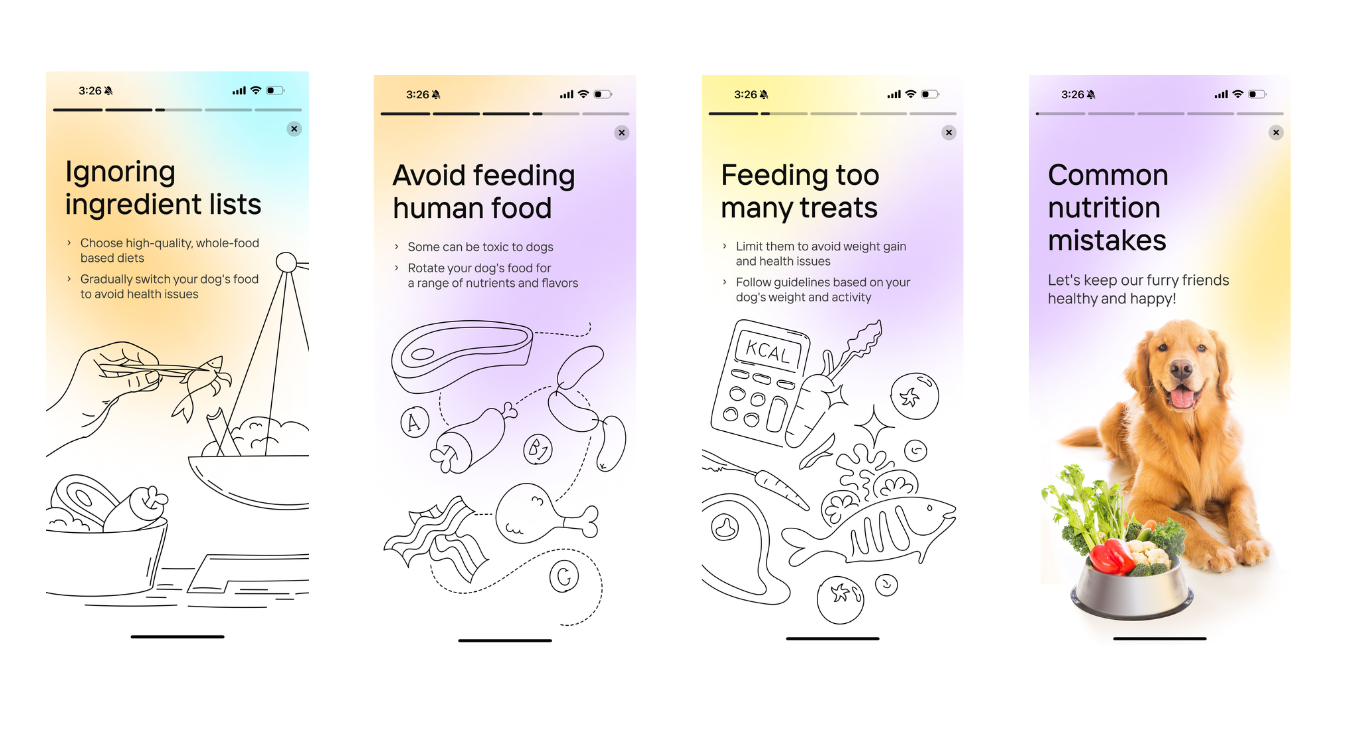
What Is the Healthiest Dog Food?
The healthiest dog food is nutrient-dense, high-quality meals packed for growth, with good digestion, and general well-being. Quality formulas include real meat, healthy fats, fiber, and important vitamins.
Crucial Ingredients for Quality Dog Food:
🐕 Protein Quality – Strengthens muscle mass and energy (chicken, turkey, beef, fish).
🐾 Healthy Fats (Omega-3 & Omega-6) – Make skin and coat healthy (fish oil, flaxseed).
🥕 Vitamins & Antioxidants – Enhances immunity and disease prevention (blueberries, carrots).
🍚 Complex Carbohydrates – Short burst energy (brown rice, sweet potatoes).
🦴 Glucosamine & Chondroitin – Degenerative joint disease and arthritis is more common in large breed dogs, so glucosamine and chondroitin sulfate may be beneficial.
Foods to Avoid for Dogs:
_(2)_1743763792.jpg)
Top 5 Dog Food Brands for Nutrition
1️⃣ Hill’s Science Diet – Vet-recommended with balanced nutrients
2️⃣ Royal Canin — Customized formulas for various breeds and sizes
3️⃣ Orijen – Protein-rich, real meat based, grain-free.
4️⃣ Blue Buffalo – Whole grains and wild caught meat without artificial additives.
5️⃣ The Farmer’s Dog — Fresh, human-quality meals, delivered to your door.
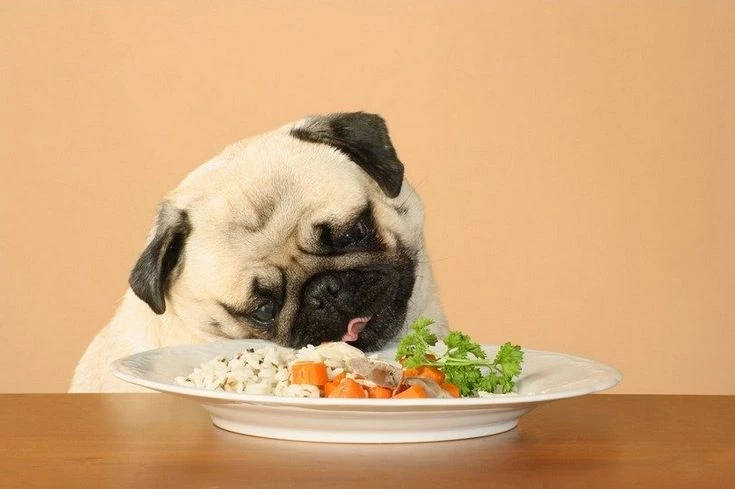
Dry vs Wet Dog Food – Which Is Better?
Your dog’s age, health and dietary needs will determine whether you should buy dry or wet dog food. Both are nutrient rich, but each has special benefits and disadvantages.
Pros and Cons of Dry Dog Food
✅ Convenient & Cost-Effective – Easy to keep, stays longer, and typically less expensive.
✅ Promote Healthy Teeth – Crunchy texture reduces plaque and strengthens teeth.
✅ Nutrient-Dense – Offers balanced proteins, carbs, and vitamins with small servings.
❌ Less Moisture – This can lead to dehydration, particularly in older dogs.
❌ Possible Fillers – Some brands are for low-grade grains and by-products.
Not sure what or how to feed your dog❓
From picky eaters to pups with allergies, Dosty’s nutrition guides make it easy to choose the right food.
📲 Open Dosty and feed your dog with confidence.
Pros and Cons of Wet Dog Food
✅ Higher Moisture Content – Helps with hydration, especially for dogs that drink less water.
✅ Easier to Chew – Ideal for puppies, senior dogs, or pets with dental issues.
✅ More Appealing to Picky Eaters – Rich flavors and textures increase palatability.
❌ Shorter Shelf Life – Spoils faster once opened and needs refrigeration.
❌ More Expensive – Higher cost compared to kibble, especially for large dogs.
Is Dry Dog Food Healthier?
Dry dog food, when it is made from high-quality ingredients, can be healthy. Just the right amount of proteins, fats and carbohydrates ensure consistent nutrition in every meal.
Benefits of Dry Dog Food:
- 🥩 Nutrient-Dense – Kibble contains high levels of nutrients in small portions, perfect for portion control.
- 🦷 Dental Care Assistance – The crunchy texture aids in removing plaque and tartar, lowering the likelihood of dental conditions.
- 💰 Cost-Effective & Convenient – Dry food has a better shelf life and easier to store than wet food, which can be advantageous for some pet owners.
But because dry food has low water levels, some dogs may become dehydrated if not drinking enough water. Some brands using fillers such as corn and wheat, which supply limited amount of nutrients.
Does Wet Dog Food Provide More Hydration?
Yes, wet dog food is comprised of approximately 70-80% water, making it an excellent source of hydration, especially for dogs that do not drink enough water.
Why Moisture Levels in Dog Food Are Important
- Prevents Dehydration – Important for dogs that are prone to kidney problems or urinary tract infections
- Easier To Chew – Perfect for puppies, seniors and dogs with missing teeth.
- Improves Palatability – The feel and smell of food helps it to be more enticing to those picky eaters.
But wet food spoils more quickly and can be pricier, so some owners combine it with kibble for a balanced approach.
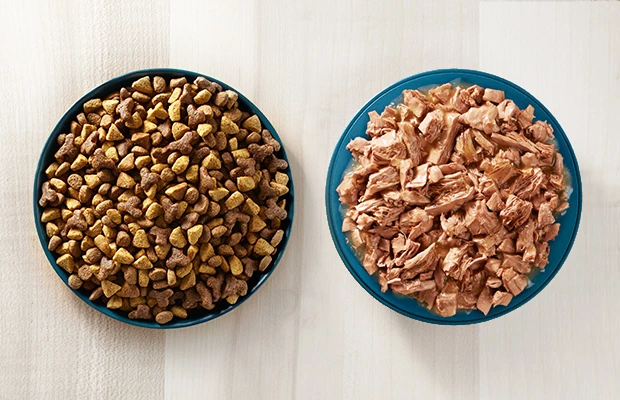
Best Fresh Dog Food Delivery in the US
Fresh dog food delivery services offer pre-portioned, human-grade fare tailored to your dog’s nutritional requirements. These firms use real meats, real vegetables, and no artificial additives.
Top Fresh Dog Food Brands:
The Farmer’s Dog – Human-grade meals, vet-formulated for balanced nutrition.
Ollie – Fresh, lightly cooked food for your dog’s size and breed.
Nom Nom – Custom meal plans with restaurant-quality ingredients.
Spot & Tango – Fresh and freeze-dried options.
Is Fresh Dog Food Better Than Kibble?
Yes, Fresh dog food includes higher-quality ingredients and is more digestible than kibble. There are no artificial preservatives included in this option.
Why Fresh Dog Food Stands Out
- More Easily Digestable – Natural ingredients support improved nutrient absorption.
- Fewer Additives & Fillers – Free of artificial flavors, colors, and preservatives.
- Customizable Nutrition – Customized according to a dog’s age, weight and health needs.
But fresh food costs more and needs to be refrigerated. Some owners combine fresh food with kibble for a cost-effective way to add nutrition.
How to Choose the Right Dog Food?
Choosing the best dog food for your pup is a challenge, since the right choice differs depending on breed, size, activity level and certain health issues. Different dogs have different dietary needs at different points in their life, based on their growth phase, metabolism and lifestyle. You can become a serious eater of high-quality food, real meat, healthy fats, digestible carbohydrates, and vitamins.
Does Breed and Size Matter?
✔️ Small Breeds – Require high-calorie food due to their fast metabolism. Snacks can replenish energy levels – search for pet food with small, high-protein and high-fat kibble sizes. Examples: Yorkshire Terriers, Chihuahuas, Pomeranians
✔️ Large Breeds – Need joint-friendly ingredients such as glucosamine or chondroitin to help keep hip and joint problems at bay. Raging appetite must be controlled, ensuring that bones do not grow faster than muscles during periods of rapid growth. Examples: Labrador Retrievers, German Shepherds, Great Danes.
✔️Working Dogs – Require diets that are high in protein and fat in order to preserve muscle strength and stamina. These dogs thrive on lean proteins, healthy fats, and slow-digesting carbs. Examples: Border Collies, Australian Shepherds, Belgian Malinois
Selecting the right food is just half the battle. What matters is doing the same thing and knowing what works for your dog.
📌 Dosty’s Food Tracker lets you log meals, track portions and help prevent you from overfeeding as your dog grows or changes foods. It is easy, low-stress, and designed for real-life dog parents.
🐾 Feed with confidence from day one with Dosty App.
![]()
How to Avoid Low-Quality Dog Food?
❌ No Artificial Preservatives – Harmful chemicals have long-term health risks (BHA, BHT, and ethoxyquin).
❌ Avoid Fillers & By-Products – Fillers contain little nutrition (for example, corn, wheat, and soy are often fed to dogs, despite the fact that they do not digest and cause digestional problems) and animal by-products may contain things that we find unpalatable.
❌ AAFCO Approval – The Association of American Feed Control Officials (AAFCO) sets minimum nutritional standards and guidelines to ensure that pet food fulfills complete and balanced diets.
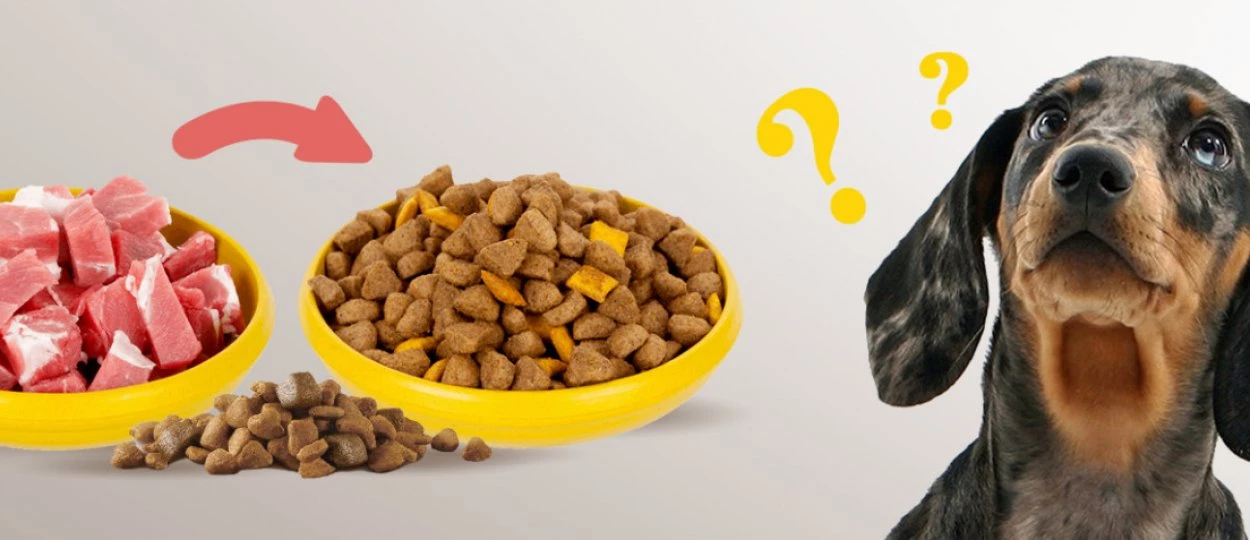
FAQs About Dog Food
1. How much and what should my dog eat?
Most dogs are fed twice a day, though puppies may need three to four meals a day.
2. Can I feed my dog homemade food?
Yes, but it should be nutritionally balanced with the correct proteins, fats and vitamins.
3. Is it safe if dogs eat grain-free food?
Not all dogs require a grain-free diet — some grains provide excellent nutrients and fiber.
4. What’s the ideal diet for senior dogs?
Older dogs should eat lower-calorie food with joint-health-supporting supplements such as glucosamine.
5. Can dogs eat raw food?
Yes, but it needs to be planned meticulously to avoid health risks.
Conclusion – What’s the Best Dog Food?
The best dog food for your furry friend varies based on his or her age, size, activity level and health needs. Discover the best dog food with high-quality ingredients, balanced nutrition and vet-approved brands to keep your dog healthy and active.
Picking the right kind of food is essential for your pooch to lead a happy life for a long time.
👉 Track their diet, adjust portions, and get vet advice when needed.


